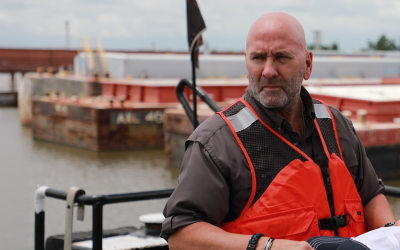A four-day, weekend trek along the Mexican border has convinced U.S. Rep. Clay Higgins, R-Port Barre, that America can protect its southern perimeter with a mix of resolve, reinforcements and existing technology.
“The challenges vary as the border changes,” Higgins, a career lawman and freshman congressman, said. In some areas a wall is needed to slow down or deter drug trafficking and human trafficking from Mexico along the roughly 2,000-mile border. In other areas, enhanced fencing, secondary fences, flood walls or simply the existing, rugged terrain hampers or keeps international trespassers out.
“Man, we don’t need 2,000 miles of actual wall. We need to move beyond the idea of building a ‘Great Wall of China,'” he said.
But we need protection, he explained, from Mexican criminal cartel efforts that illegally move drugs and people into the U.S.
Higgins made the recent trip along with a handful of congressmen, mostly fellow members of the House Committee on Homeland Security. They flew or drove from San Diego to Tucson, Arizona; El Paso, Texas; to the Gulf Coast. Along the way they inspected a secret tunnel and U.S. protective infrastructure; talked with U.S. military, Border Patrol officers, sheriffs and deputies and police; learned about drones and tethered balloons that peer across the border to pinpoint transgressions; and departed with the data and knowledge needed to craft legislation.
Here’s how varied Higgins says the tactics and technology of border protection must be:
- In San Diego, border patrols must watch for the underground tunnels used to sneak drugs into the U.S. Elsewhere, the tight soil and bedrock makes it impossible to tunnel.
- From thousands of feet over Arizona predator drones use cameras and radar to pinpoint the movement of people toward and over the boarder. Elsewhere, the heat is too intense for drones, and tethered balloons are a better means for watching for incursions.
- At some mountainous points, no fence is possible or even needed. The rugged terrain is the deterrent. But border agents in all-terrain vehicles and even on horseback can capture and control those snared while illegally crossing the border.
- Foliage provides a canopy for illegal border crossings along the Rio Grande. The criminal cartels control much of the land on the southern side of the twisting river, while agents and police, hampered by a lack of roads on the American side, scramble to keep up with them.
“I went into that foliage. It’s almost impossible to traverse. A lot of it is cactus,” Higgins said.
But law enforcement has much more than plant life to deal with. The cartels employ young men — teenagers, mostly — to scout the area for border officers. In some border crossings, those scouts will throw rocks at border patrols to great effect; officers have sustained crippling injuries from those assaults.
On the Rio Grande, Higgins was told, simple flood walls would serve a twofold purpose: protect the U.S. side from rising waters and deter incursions from the Mexican side. In fact, he said, crossings cannot be wholly stopped, but if barriers slow down the northbound invasions border protectors can get there quick enough to capture people.
Higgins said he learned lots from men and women “on the ground,” the deputies, police and soldiers who protect the border everyday. Their insights and advice will help lawmakers craft legislation. Higgins said those protectors know exactly what they need and where they need it to be effective.
“We need more agents, more horses, more drones and a greater tethered fleet,” Higgins said. Physical barriers, too, must be bolstered. The Coast Guard needs more boats. But he said lawmakers, in “protecting the people’s treasure,” don’t need to overspend.
Here’s one more thing he said he learned: Morale among law enforcement and troops has soared since the November elections. America’s border protectors believe their government values their work and will send needed reinforcements.



